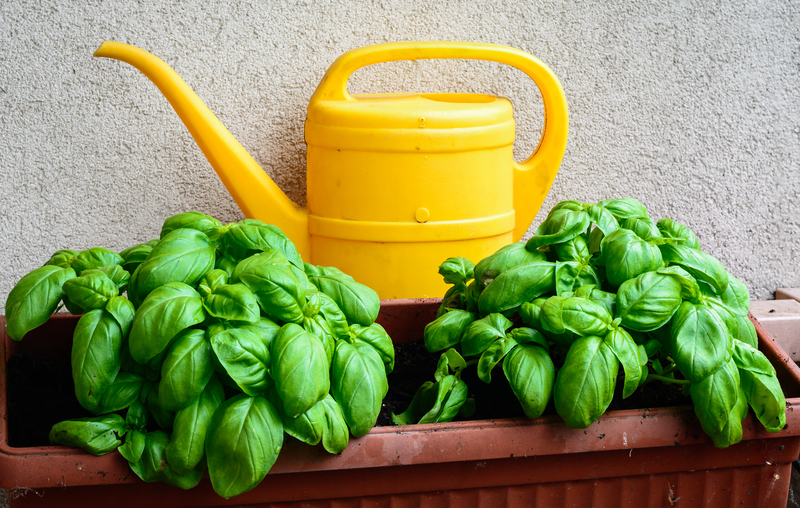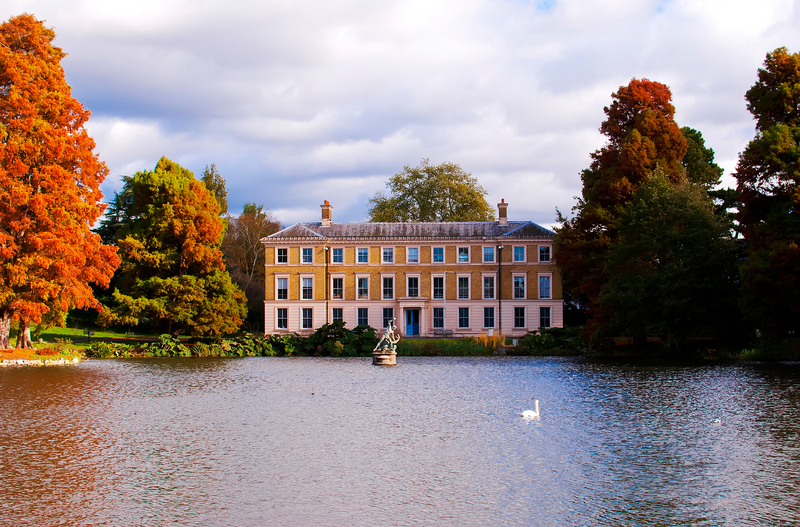Designing a Garden That's Perfect for Children
Posted on 16/06/2025
Designing a Garden That's Perfect for Children: An Expert Guide
Are you dreaming of a backyard oasis where your kids' imaginations can flourish alongside flowers and fresh veggies? Designing a garden that's perfect for children requires thoughtful planning, creativity, and a touch of whimsy. In this comprehensive guide, we'll explore how to create a child-friendly garden that's not only beautiful and safe but also educational and engaging for kids of all ages.

Why Create a Child-Friendly Garden?
A well-designed garden for children is much more than an outdoor space. It's a dynamic environment that encourages exploration, learning, exercise, and family bonding. Here's what makes a kid-friendly garden so valuable:
- Outdoor Play: Engages children in physical activity which supports overall well-being.
- Hands-On Learning: Kids develop a deeper understanding of nature, science, and food production.
- Creativity Boost: Natural settings inspire imaginative play and artistic adventures.
- Sensory Stimulation: Exposure to various colors, scents, and textures enhances sensory development.
- Family Connection: Gardening offers shared experiences for parents, grandparents, and kids.
Key Considerations for Designing a Safe and Fun Children's Garden
Before you dig in, let's examine the essential elements for creating a garden that's suitable for children:
Safety First: Make the Garden Secure
- Fencing: Install secure fencing to keep children within the garden and prevent unwanted visitors.
- Avoid Toxic Plants: Choose plants that are safe if touched or tasted. Steer clear of toxic species like foxglove, oleander, or rhubarb leaves.
- Chemical-Free Zone: Practice organic gardening by avoiding pesticides, herbicides, and chemical fertilizers.
- Non-Slip Surfaces: Use bark, grass, or rubber tiles for play zones to reduce slipping and falls.
- Secure Water Features: Water can be alluring to kids. Ensure ponds or fountains are child-proofed or covered.
- Tool Safety: Store sharp tools and equipment out of children's reach, and provide kid-sized tools for supervised activities.
Age-Appropriate Zones and Features
- Quiet Corners: Create shaded nooks or tepees where children can read, rest, or daydream.
- Active Play Spaces: Dedicate areas with features like a treehouse, slide, or climbing wall for energetic play.
- Mud Kitchen: Set up a "mud kitchen" with old pots, pans, and utensils for messy, creative play.
- Pathways for Exploration: Wind pathways through flower beds and vegetable patches, encouraging curiosity and adventure.
- Height-Appropriate Raised Beds: Build raised garden beds at a height accessible to little hands.
Choosing the Right Plants for Children's Gardens
Plant selection is at the heart of child-friendly garden design. Consider choosing plants that engage multiple senses and are easy to grow.
Bright Colors and Unusual Shapes
- Sunflowers: Their towering stalks and large blooms fascinate children.
- Nasturtiums: Edible flowers with brilliant colors.
- Snapdragons: Fun shapes and "mouths" that can be squeezed open.
- Zinnias: Hardy, vibrant, and long-flowering.
Edible Delights
- Strawberries and Blueberries: Naturally sweet, fun to pick, and rich in nutrients.
- Peas and Cherry Tomatoes: Delicious straight from the vine and easy for small fingers to harvest.
- Herbs: Mint, basil, and chives provide flavor and aroma; try rubbing leaves between fingers to release their scent.
- Pumpkins and Gourds: Watch them grow large and unique, perfect for fall crafts.
Sensory Plants for Hands-On Learning
- Lamb's Ear: Soft, fuzzy leaves children love to touch.
- Lavender: Fragrant flowers encourage smelling and sensory games.
- Grasses and Bamboo: Whisper and sway in the wind, creating movement and sound.
Incorporating Learning into Your Children's Garden
A garden designed with children in mind is a natural classroom. Here's how to foster learning at every turn:
- Label Plants: Use fun, colorful plant labels with both pictures and words.
- Wildlife Watch: Install bug hotels, butterfly feeding stations, and birdhouses. Track which species visit your garden.
- Weather Station: Build a simple weather station with rain gauge, thermometer, and wind chimes.
- Composting Experiment: Involve kids in creating compost and learning about recycling natural waste.
- Garden Journals: Encourage children to record plant growth, sketches, or new discoveries.
Creative Play Zones: Making Your Child's Garden Magical
Blending imagination and garden design for kids creates a magical oasis that will captivate young minds for hours.
DIY Fairy Gardens and Dinosaur Pits
- Miniature Fairy Gardens: Use small plants, stones, and tiny houses to build fairy or gnome villages.
- Dinosaur Digs: Bury plastic dinosaur bones in a sandbox for paleontology adventures.
Living Willow Structures and Sensory Mazes
- Willow Domes or Tunnels: Fast-growing willow branches can be woven into living, green spaces for kids to crawl through or hide inside.
- Maze Gardens: Plant low hedges or tall sunflowers in an arrangement that forms a simple maze, perfect for games of hide and seek.
Art in the Garden
- Nature Collages: Provide baskets for gathering leaves, petals, and stones to create temporary art on the lawn or patio.
- Painted Rocks: Turn stones into ladybugs, bees, or turtles to hide among the flowers.
- Outdoor Chalk Murals: Dedicate a fence section or paving stones for sidewalk chalk creativity.
Water Features and Sensory Elements
Incorporating water elements into your child-focused garden elevates the experience with sensory play and emotional soothing. Always prioritize safety with any water feature!
- Bubbling Fountains: Enchanting and calming to watch and hear.
- Mister or Sprinkler: Fun for splashing on hot days and watering the plants simultaneously.
- Small Ponds (with covers): Supports frog or goldfish habitats, which can be an educational opportunity.
Getting Kids Involved: Gardening Activities for All Seasons
A garden that welcomes children is one where they help plan, plant, and play! Here's how to get them engaged year-round:
Spring
- Start seeds indoors and watch them sprout.
- Design garden labels and decorate planting pots together.
- Plan the layout of beds, fairy gardens, or vegetable patches.
Summer
- Harvest fruits, veggies, and flowers for snacks and bouquets.
- Host outdoor "tea parties" or picnics in the garden.
- Create nature scavenger hunts.
Autumn
- Rake leaves into piles for jumping and playing.
- Collect seeds for next year's planting.
- Decorate with pumpkins and gourds grown in your own patch.
Winter
- Build bird feeders and keep a journal of winter wildlife visits.
- Craft garden decorations or plan next year's garden design from indoors.
Maintenance and Upkeep: Making the Garden Last
A children's garden is meant to evolve as your family grows. Maintain its safety, fun, and educational value with these tips:
- Regular Inspections: Check fences, play structures, and water features for damage.
- Weed and Mulch: Keep pathways and beds tidy and safe to walk on.
- Refresh Zones: Redesign play or learning spaces as kids' interests change.
- Update Plants: Try new plants or build new raised beds for variety.

Conclusion: Enjoy Growing Together!
Designing a garden that's perfect for children is a journey filled with joy, creativity, and learning. By balancing safety, play, sensory experiences, and opportunities for hands-on learning, you'll build an outdoor haven that delights children and adults alike. Whether you have a sprawling yard or a cozy patio, your child-friendly garden can be tailored to your unique space and your family's dreams.
Ready to get started? Roll up your sleeves, grab some child-sized gloves, and begin growing memories that will last a lifetime!
Frequently Asked Questions About Child-Friendly Garden Design
-
What plants are safest for a children's garden?
Opt for non-toxic, sturdy plants like sunflowers, marigolds, pansies, lettuce, strawberries, and snap peas. Consult local gardening resources for plant lists specific to your region. -
How can I make my garden low-maintenance with kids?
Use mulch to suppress weeds, choose native or easy-care plants, and install simple drip irrigation systems. Raised beds and container gardens also make maintenance easier. -
What activities keep kids engaged in the garden?
Seasonal crafts, scavenger hunts, wildlife observation, and letting them have their own "mini garden plot" for personal projects are excellent choices. -
Can I create a children's garden in a small space?
Absolutely! Use container gardening, vertical planters, hanging baskets, and transform balconies or patios into magical spaces with creative structures and portable sand/water tables.
If you've enjoyed these tips on designing the perfect children's garden, share your own backyard adventures and inspiring ideas in the comments below. Happy gardening!

